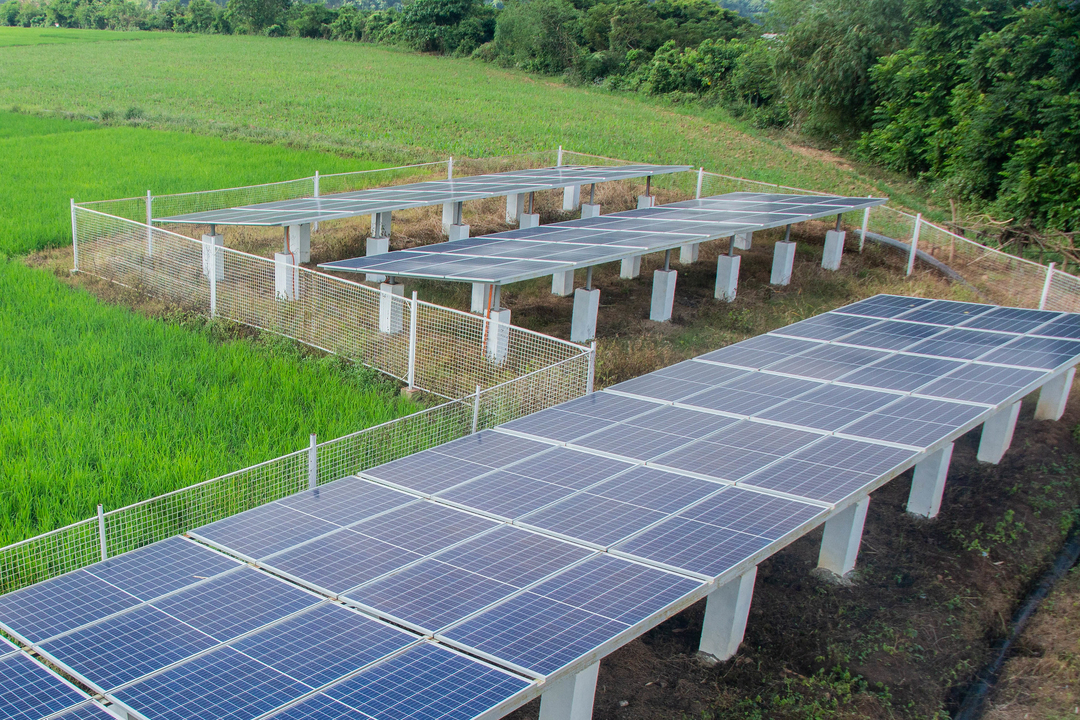November 26, 2025 | 17:41 GMT +7
November 26, 2025 | 17:41 GMT +7
Hotline: 0913.378.918
November 26, 2025 | 17:41 GMT +7
Hotline: 0913.378.918

The US Secretary of Agriculture announced the website of the International Climate Hub Photo: CGIAR.
Secretary of Agriculture Tom Vilsack announced the release of the “USDA Science and Research Strategy, 2023-2026: Cultivating Scientific Innovation” during the opening plenary of the summit on May 8. This strategy drives USDA’s science priorities for the next three years to establish a scientific framework to transform the U.S. food system and support the nation’s farmers, ranchers, producers, and foresters.
“We know that scientific innovation can enable new, cost-effective solutions for addressing some of our most daunting challenges,” said Secretary Vilsack. “This is a forward-looking strategy that aligns with USDA’s strategic priorities and allows us to make significant advances in food, agriculture and natural resource sectors”.
The strategy’s five science and research priorities include: Accelerating Innovative Technologies & Practices, Driving Climate-Smart Solutions, Bolstering Nutrition Security & Health, Cultivating Resilient Ecosystems, and Translating Research into Action. This cross-cutting strategy demonstrates how USDA science begins with innovation and moves across key priorities to address the obstacles we face in agriculture and ensure the research translates into real-world solutions.

There are 51 innovation sprints on climate-smart agricultural innovation and food systems under the AIM4C framework with an investment of USD 3 billion.
Building on the announcement at COP27 to launch an International Climate Hub based on the success of its domestic Climate Hubs, Secretary Vilsack announced the launch of the International Climate Hub website. This new portal will enable science-based, climate-informed agricultural decision-making by providing information and resources tailored to specific regions and needs, including a focus on the countries and producers most vulnerable to the effects of global climate change.
A tool included in the International Climate Hub, the COMET-Planner Global Assessment Tool, will enable land managers around the world to estimate the current and potential greenhouse gas mitigation and carbon sequestration benefits of common agricultural conservation practices. This foundational tool leverages USDA’s and Colorado State University’s decade of experience building climate-smart conservation planning tools and will help measure and demonstrate the beneficial impacts of climate-smart conservation practices on working lands worldwide.
Funding for AIM for Climate goes up to $13 billion
Funding for a U.S. and United Arab Emirates-led initiative to make the world's farming more environmentally friendly and resilient to climate change has grown to more than $13 billion, a U.S. official said on Monday.
The Agriculture Innovation Mission for Climate (AIM for Climate) was launched in 2021 and achieved commitments of USD 8 billion last November.
"Climate change continues to impact longstanding agricultural practices in every country and a strong global commitment is necessary to face the challenges of climate change head-on," U.S. Agriculture Secretary Tom Vilsack said in a statement.
About USD 10 billion of the USD 13 billion of investment in the agricultural fund is from governments. The rest is from non-government parties funding initiatives to support smallholder farmers, emerging technologies and methane reduction, a U.S. Department of Agriculture spokesperson said.
The fund seeks to unite nations to cut emissions from agriculture, the field that accounts for about 10% to 12% of greenhouse gas emissions. These emissions are from sources including livestock manure, machinery and fertilizer application, according to the Intergovernmental Panel on Climate Change.
For the progress of AIM for Climate
Secretary Vilsack noted that the Summit is a pivotal moment to demonstrate AIM for Climate progress, as there is a global appetite to accelerate progress in meeting the challenges of global food and nutrition security and climate change. Secretary Vilsack announced new investments, partners, and resources to propel the initiative into COP28, including
Increased Investment: Partners have increased investment in climate-smart agriculture and food systems innovation to more than $13 billion (over a 2020 baseline), exceeding the challenge by U.S. Special Envoy for Climate John Kerry at COP27 to achieve $10 billion by COP28.
Innovation Sprints: 21 new innovation sprints totaling an additional USD 1.8 billion in increased investment in climate-smart agriculture and food systems innovation, bringing the total number of innovation sprints to 51 (over USD 3 billion). The ‘Innovation sprint’ mechanism under AIM for Climate mobilises private equity from companies and non-governmental foundations, in conjunction with public funding, to areas of innovation that can be completed in an expedited timeframe. There are over 30 Innovation Sprints under AIM for Climate across four focal areas including smallholder farmers in low- and middle-income countries; methane reduction; emerging technologies; agroecological research.
Partners: New partners including the governments of Argentina, Fiji, Guatemala, India, Panama, Paraguay and Sri Lanka, bringing the total number of government, innovation sprints, and knowledge partners to more than 500.
Translated by Linh Linh

(VAN) The Disaster Prevention Community Fund has mobilized resources to install automatic rain gauge and flood warning stations, helping localities proactively respond to natural disasters more effectively.

(VAN) Thanh Hoa province has substantial potential to supply carbon credits, opening opportunities for green economic development, enhancing agriculture and forestry value.
/2025/11/25/1741-0-nongnghiep-221736.jpg)
(VAN) The application of AI helps identify emission sources and assess air pollution developments, thereby supporting management agencies in issuing timely and appropriate control policies.

(VAN) Viet Nam will develop its carbon market not only by prioritizing transaction volumes but also by transitioning to a low-emission economy.
/2025/11/25/3413-1-171953_261.jpg)
(VAN) Experts from the Vietnam Academy of Science and Technology have conducted surveys to identify the causes of landslides in Lam Dong province and propose natural disaster prevention solutions.

(VAN) The HNT reservoir operation support system, developed by WeatherPlus in collaboration with Kyushu Electric Power, enables real-time rainfall forecasting, inflow forecasting, and flood-release simulations.

(VAN) Dr. Cao Duc Phat stated that the localization of early natural disaster warning technologies will help meet practical requirements and create favorable conditions for domestic research institutions and businesses to develop.